7 proven strategies to improve average handling time in your call center
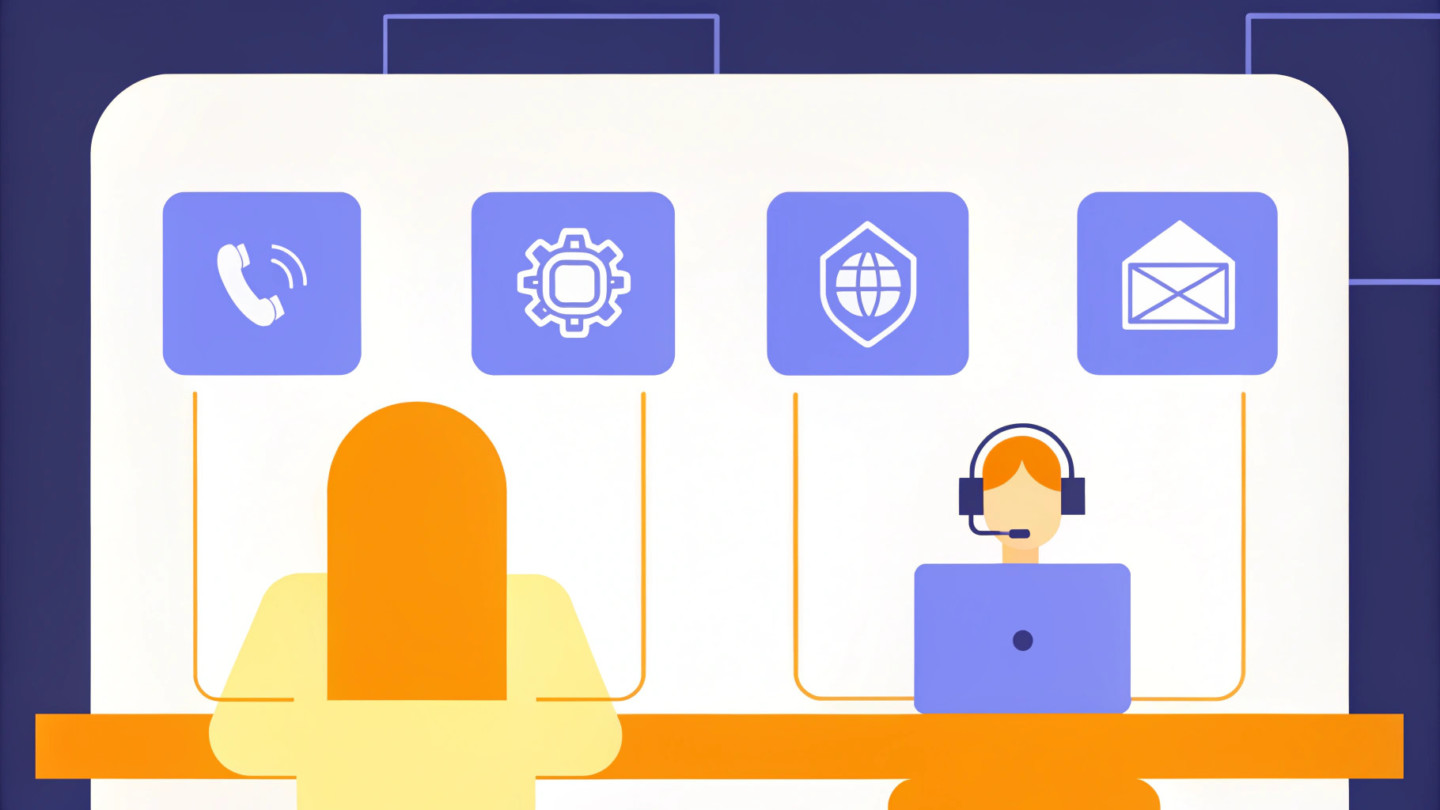
Introduction
In the competitive landscape of call centers, Average Handle Time (AHT) emerges as a critical performance metric that directly influences both operational efficiency and customer satisfaction. This article delves into the significance of AHT, exploring its role in optimizing customer interactions and enhancing agent productivity.
With the rise of omnichannel engagement and evolving customer expectations, understanding AHT is essential for organizations aiming to refine their service delivery. By examining effective strategies such as:
- Agent training
- Technological integration
- Process optimization
- Leveraging customer insights
call centers and customer service teams can not only reduce AHT but also create a more responsive and satisfying experience for their customers. As the industry continues to evolve, mastering AHT will be key to maintaining a competitive edge.
Understanding average handle time (AHT): A key metric for call centers
Average handling time (AHT) is the heartbeat of the call center industry and other support teams. It measures how long a representative spends on each client interaction — talk time plus any follow-up tasks. Understanding AHT is vital. It’s not just about efficiency; it’s about how well your representatives manage client relationships.
With omnichannel client interactions on the rise — projected to grow by 13% annually and nearing $18 billion in revenue by 2030 — customers expect reps to know their purchase history and resolve inquiries swiftly, no matter the platform. This expectation isn’t just a nice-to-have; it’s a necessity. Grand View Research emphasizes that agents must have comprehensive client information at their fingertips.
Turnover is another critical factor. Engaged workforces see 43% lower turnover rates. This highlights how crucial AHT is for both customer satisfaction and employee retention. If you analyze AHT data, you can identify areas for improvement and set performance benchmarks that matter.
Now, let’s talk numbers. A good average conversation duration hovers around 6 minutes and 3 seconds. If you can reduce AHT, you’re not just streamlining operations; you’re boosting satisfaction. Research shows that about 28% of people hang up after just 5 minutes on hold. That’s a significant loss.
The case study on AHT metrics makes it clear: optimizing workflows and tools can elevate the overall client experience.
In short, grasping AHT isn’t just important; it’s essential for crafting effective strategies to enhance this key metric. Do that, and you’ll see improvements in service quality and client satisfaction.
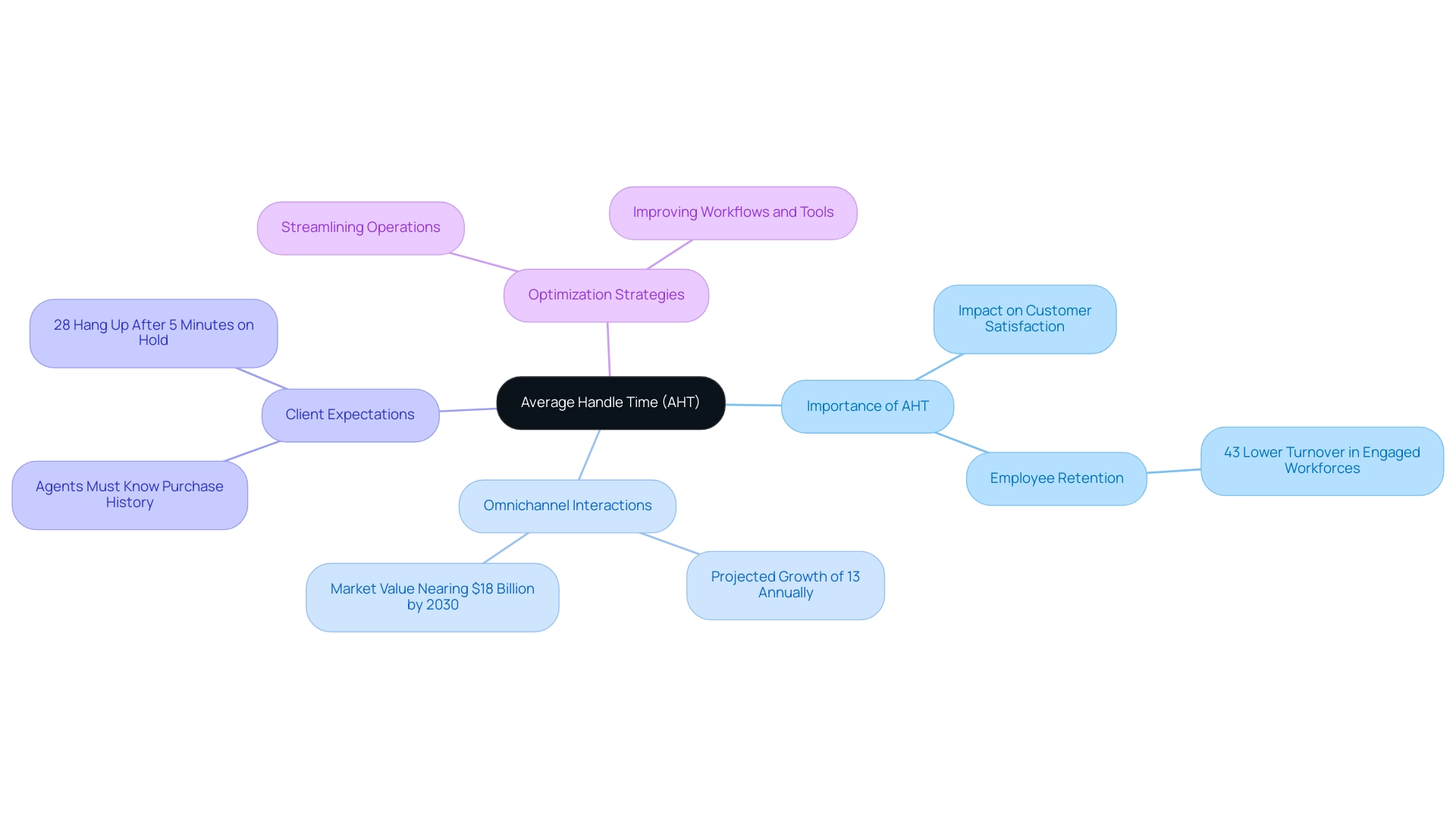
Enhancing agent training and empowerment to reduce AHT
Investing in training programs isn’t just a nice-to-have; it’s a necessity for call centers that want to boost efficiency and cut down on average handling time. Think about it: if your team is equipped with a wide range of skills — like deep product knowledge, strong communication, and solid problem-solving — they can tackle customer inquiries much faster.
When you give your representatives the power to make decisions on their own, you’re not just speeding up the process; you’re empowering them. This autonomy allows them to resolve issues quickly, which is what customers want. Research backs this up: confident employees with the right tools solve problems more efficiently.
Regular coaching and feedback aren’t just buzzwords; they’re essential for fostering a culture of continuous improvement. When individuals improve, the whole team benefits, leading to lower handling times. Take a look at the numbers: call center reps in Switzerland earn about $56,177.16 a year. That’s a clear signal that investing in their training pays off.
Now, let’s talk about the numbers. A recent case study found that inbound voice support usage jumped to 55.4% in 2023. This shows the power of well-trained reps who can handle complex issues and deliver empathetic service. The trend points to an urgent need for skilled individuals who can make the most of their training.
Moreover, integrating support statistics software into your training can be a game changer. It offers data collection, analysis, and reporting tools that boost operational efficiency.
As we look ahead, the omnichannel client engagement market is set to grow by 13% annually, potentially reaching nearly $18 billion by 2030. In this landscape, having well-trained representatives isn’t just beneficial; it’s essential for maintaining a competitive edge.
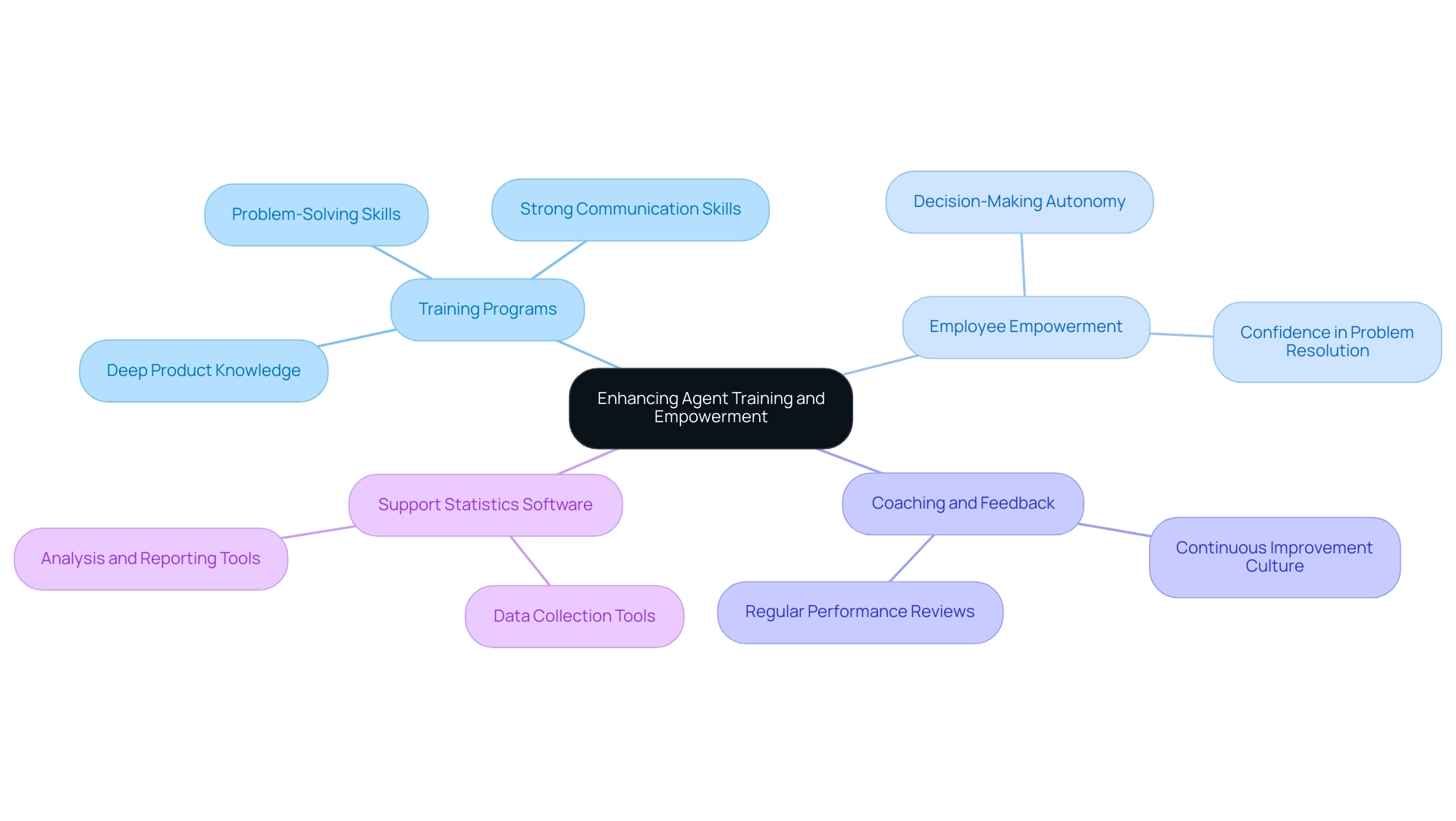
Leveraging technology and automation to optimize handling time
Integrating technology and automation into call center operations isn’t just a nice-to-have; it’s a game changer. If you want to cut down on average handling time, AI chatbots are your best friend. They handle routine questions like pros, freeing up your human agents to tackle the complex issues that need real expertise. And when you throw in a solid CRM system, you’re turbocharging efficiency. Representatives can pull up critical client information in a snap, which is essential for resolving inquiries effectively.
Here’s a telling stat: 92% of contact center reps say their organizations have a quality assurance program in place. That’s a clear signal that businesses understand the need for operational efficiency through technology. Automating repetitive tasks — like data entry and logging — means agents can zero in on what really matters: meaningful client interactions. This isn’t just about speeding things up; it’s about raising the bar on service quality to meet today’s consumer demands.
Consider the trends among younger generations. A case study shows that:
- 62% of millennials prefer self-service options, even when help is just a click away.
- A whopping 75% of Gen-Z also prefer self-service options.
This isn’t a passing fad; it’s a clear direction. By embracing these advancements, support centers can boost both efficiency and client satisfaction.
Lucia Halašková points out some crucial factors driving companies to outsource customer service:
- High literacy rates
- Affordable solutions
- Smart government policies
- A neutral English accent among local reps
These elements not only make outsourcing attractive but also reinforce the need for technology to enhance service delivery. In a nutshell, if you’re not integrating technology into your call center, you’re missing out on a massive opportunity to improve.
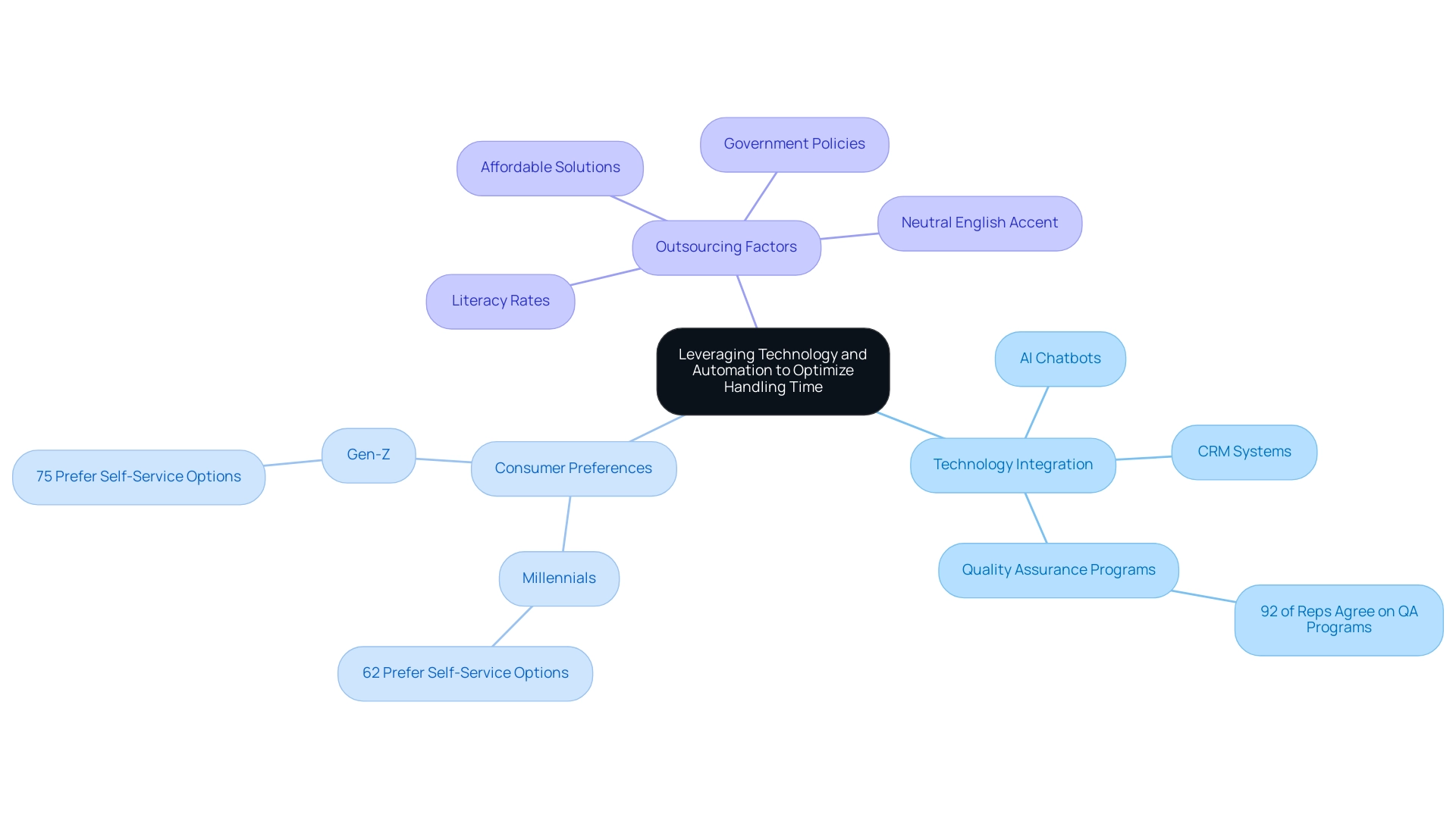
Optimizing processes and resource allocation for better AHT
If you want to improve average handling time in your contact center, you need to keep evaluating and optimizing your operations. It all starts with your routing systems. Make sure that incoming inquiries go to the right agents — those who have the skills and availability to handle them. This simple step can cut down wait times and create a better experience for your customers.
Next, dive into your communication data. Analyzing this information helps you spot trends that can guide your staffing decisions. You want to ensure you have enough coverage during peak times. Streamlining your internal processes is also crucial. Eliminate any unnecessary steps in call handling. The less time agents spend on administrative tasks, the more time they can spend helping customers.
Looking ahead, research shows that by 2025, nearly 95% of interactions will be processed through sentiment analysis tools. This means agents will be better equipped to respond to client needs. Also, consider this: a case study found that 62% of millennials and 75% of Gen-Z customers prefer self-service options, even when help is available. This highlights the importance of self-service solutions in enhancing customer interactions.
Accenture predicts that by 2040, AI will increase productivity in communication hubs by 35%. That’s a game changer. By optimizing how you distribute resources and refining operational procedures, you can boost efficiency and significantly improve the quality of your interactions — all while hitting those key performance indicators.
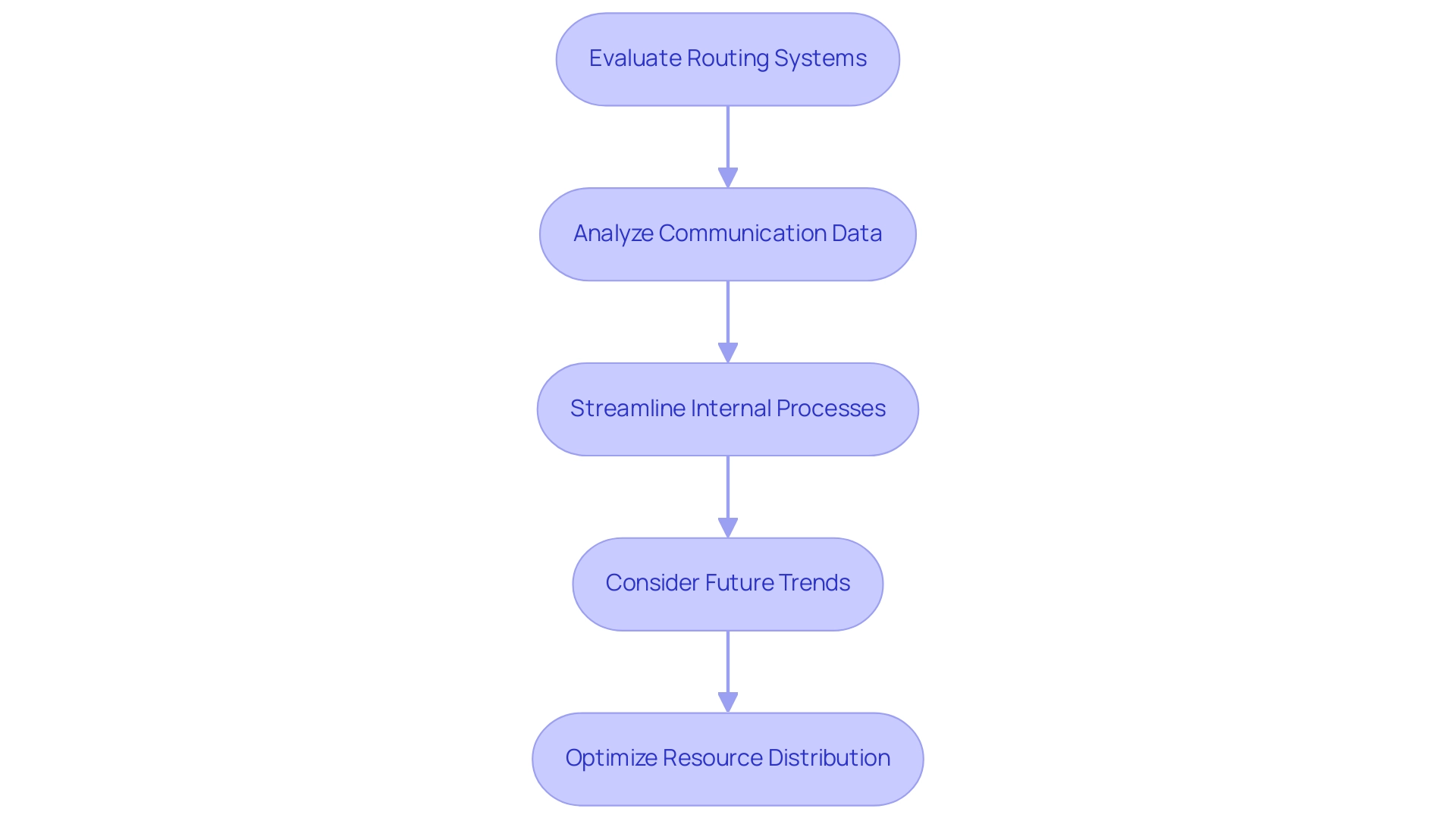
Utilizing customer insights to enhance average handle time
In customer service, understanding your clients is non-negotiable. But if you want to really up your game, you need to integrate smart automation solutions like Dashly. Think of it as adding a turbocharger to your engine. By handling up to 40% of all user queries automatically, Dashly cuts down the manual grind for your support team. Before Dashly, clients were bogged down by slow response times, poor SLA compliance, and wasted time on typical questions. That’s a surefire way to stall your support team performance.
To get ahead, proactively solicit feedback through surveys and follow-ups. This isn’t just busywork; it’s about gathering crucial information on client satisfaction and specific pain points. By diving deep into this data, organizations can identify recurring issues that are dragging down handling times. For example, improving self-service options or giving agents better tools based on client feedback can lead to substantial efficiency gains.
With Dashly taking care of common queries with AI bot and providing a self-service opportunity with a help center, your customer service team can zero in on high-value interactions. This shift not only cuts response times but also boosts customer satisfaciton. And let’s not overlook analytics: Dashly collects data on your agents’ performace, shows you the busiest days, the average queries solved, so you can rearange the work of your team for maximum efficiency. Accenture highlights that by 2040, AI is set to improve efficiency in communication and support hubs by 35%. That’s a clear signal that blending technology with client insights is the way forward.
Consider this: 32% of clients would abandon a brand they once liked after a negative experience. That’s a wake-up call. Aligning your support operations with client expectations isn’t just about efficiency; it’s essential for boosting customer satisfaction and loyalty, which ultimately drives revenue growth.
And let’s not forget the bigger picture. Understanding industry benchmarks, like the average salary for call center representatives in the Philippines at $4,326.94 per year versus $56,177.16 in Switzerland, can provide valuable insights into operational costs and workforce management. This knowledge can sharpen your strategic decision-making. In the end, it’s about making informed choices that propel your business forward.
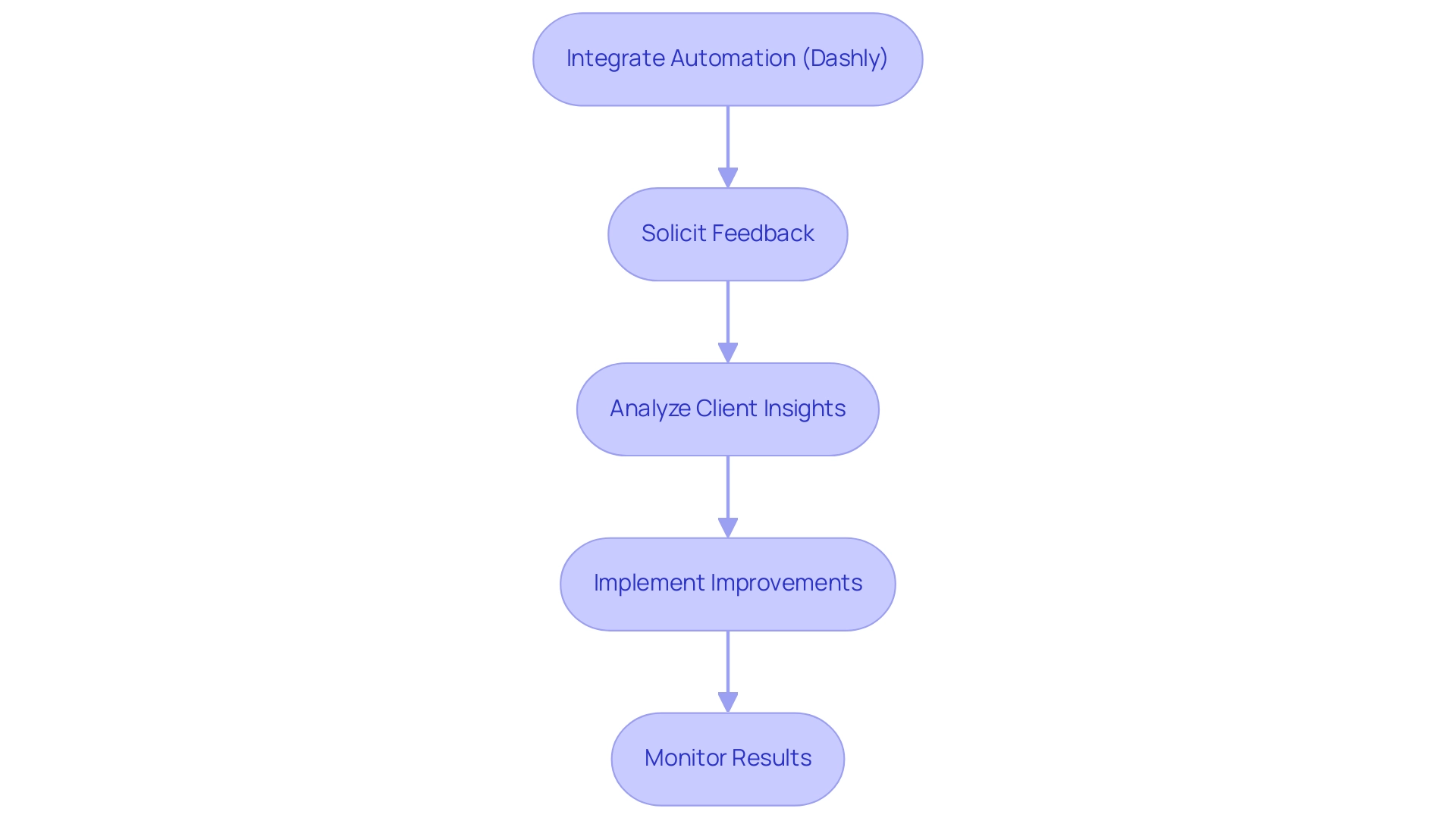
Conclusion
Reducing Average Handle Time (AHT) is essential for optimizing call center operations and enhancing customer satisfaction. This metric not only reflects the efficiency of the agents but also indicates the overall effectiveness of customer service delivery. By investing in comprehensive agent training, integrating advanced technology, and streamlining processes, call centers can significantly improve their AHT, leading to quicker resolution times and happier customers.
Emphasizing the importance of leveraging customer insights further underscores the need for a proactive approach in managing AHT. By utilizing feedback and data analytics, organizations can identify pain points and implement targeted strategies that enhance both agent performance and customer interactions. This continuous improvement cycle is vital in adapting to evolving consumer expectations and maintaining a competitive edge in the industry.
Ultimately, mastering AHT is not just about operational metrics; it is about creating a seamless customer experience that fosters loyalty and drives business success. As the call center landscape continues to evolve, prioritizing AHT will be a key determinant of an organization’s ability to thrive and meet the demands of the modern customer.



![The ultimate guide to growth marketing in 2023 [explained by a growth hacker]](https://www.dashly.io/blog/wp-content/uploads/2023/04/The-ultimate-guide-to-growth-marketing-explained-by-a-growth-hacker-720x317.png)

![21 proven tools for your 2025 marketing tech stack [Recommended by market experts]](https://www.dashly.io/blog/wp-content/uploads/2022/08/martech-stack-999-720x317.png)


![4 steps as Chief Marketing Officer at a new company [Expert guide]](https://www.dashly.io/blog/wp-content/uploads/2022/10/4-steps-as-Chief-Marketing-Officer-at-a-new-company-Expert-guide-720x317.jpg)